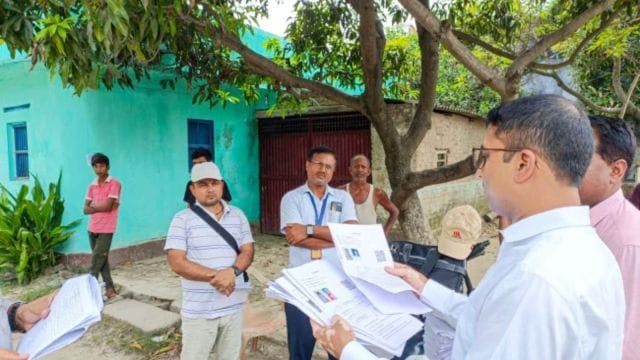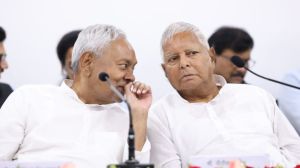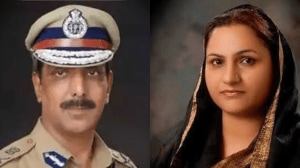Stating that its Special Intensive Revision (SIR) of the voter list in Bihar was “accurate”, the Election Commission of India (ECI) Thursday described as “communal” the charge that Muslims were disproportionately excluded from the final list at the end of the SIR exercise.
It said the objective of the petitioners was to “derail and disrupt the SIR exercise and the formulation of final electoral roll for the State of Bihar, and to prevent SIR being conducted in other States across India”.

In an affidavit filed before a Supreme Court bench of Justices Surya Kant and Joymalya Bagchi, which is hearing petitions challenging the SIR, the ECI said that claims have been made on the basis of “some software for name recognition” but the fact is that the electoral rolls do not capture the religion of any elector.
Story continues below this ad
It said that though no appeal has yet been filed against exclusion of anyone from the final list, “petitioners have sought to allege that there is disproportionate exclusion of Muslims (25% amongst 65 lakh excluded voters from the Draft Electoral Roll, and 34% amongst 3.66 lakh electors finally deleted). This is based on some software for name recognition whose authenticity, accuracy or appropriateness cannot be commented upon. This communal approach is to be deprecated. Electoral Rolls database does not capture any information on religion of any elector.”
Petitioners like NGO Association for Democratic Rights (ADR) and activist Yogendra Yadav had alleged that there was disproportionate exclusion of Muslims in the final voter list and that the exercise had led to exclusion of 81 lakh voters.
In its response, the ECI said that figures cited by the petitioners themselves “indicate that up till 2022, the number of voters were more than the projected total population and that justifies the exercise of SIR undertaken by” it “after a lapse of more than twenty-two (22) years since the previous SIR conducted in 2003”.
It said “more importantly, the stress on the figures pertaining to 2025 to indicate 81 lakh missing voters is fallacious for more than one reason. Firstly, for inexplicable reasons, the figures purportedly have been taken from the Technical Group on Population Projections 2019. There are such reports for subsequent years available. Without going into this aspect, it is not informed to this Hon’ble Court by the petitioners that the population projection is based on some formulation regarding subsequent yearly projections in the Census of 2011. The report of the Technical Group for July 2020 contains an important caveat that “population projection” is “conditioned by certain assumptions using past data”.
Story continues below this ad
The ECI said that given the summary findings of the report of the Technical Group, “these population projections based on the 2011 census cannot be used for adjudging the accuracy of the Final Electoral Roll”.
It also flagged the limited contribution of political parties and public-spirited individuals and organisations in finalising the roll.
It said “finalisation of electoral roll involves an interplay of all stakeholders and the SIR is founded on this core principle. While it is the duty of the Electoral Registration Officers (EROs) to finalise the electoral roll accurately, it is equally the duty of the electors and the contending political parties, particularly the recognised political parties, to actively participate in ensuring that the final electoral roll is as inclusive and accurate as possible. The various Notes presented the ECl to this Hon’ble Court indicates that barring appointment of Booth Level Agents, the political parties and public-spirited individuals and organisations made no substantial contribution in ensuring that all the eligible electors were included in the Final Electoral Roll. The approach of the political parties and the petitioners has been to accuse the ECI and attempt to point out errors in the SIR exercise.”
“In contrast, the ECl not only appointed more than 90,000 BLOs, but also involved the political parties and got BLAs appointed. The exercise was conducted on an H2H (House to House) basis involving more than one visit. All relevant data was uploaded on the websites. Additionally, whatever directions given by this Hon’ble Court was also complied with. This Court also enabled the assistance of the State Legal Services Authority, yet the number of objections and correction applications were minimal. This indicates that the SIR exercise was accurate,” it said.
Story continues below this ad
On Thursday, the petitioners urged the bench to direct the ECI to publish the names of those added or deleted from the main list.
The court recorded the ECI’s submission that it was in the process of publishing the same. “We have no doubt that they will fulfill their responsibility… they are bound to publish… we are not closing the matter.”
The ECI affidavit stated that the “petitioners’ objective, as has been made amply clear through the course of instant proceedings, is to derail and disrupt the SIR exercise and the formulation of final electoral roll for the State of Bihar, and to prevent SIR being conducted in other States across India”.
It said it had received only 25 claims for inclusion and 119 for exclusion with regard to the draft voter roll which “indicates that the status of approximately 65 lakh electors, who did not submit Enrolment Forms, does not suffer from any major defect and the same is broadly accurate”.
Story continues below this ad
“The claims of the petitioners regarding time being short and exercise being conducted hastily was incorrect and misconceived; the reference to high degree of illiteracy of people in the State of Bihar, numerous districts being flooded, and therefore, SIR exercise would lead to mass disenfranchisement due to inability of electors to furnish documents sought under the SIR Order dated 24.06.2025 was also misconceived, incorrect and erroneous,” it said.
It said “non-inclusion of the approximately 65 lakh individuals who did not submit forms were due to death, permanent shifting, enrolment at multiple places, and this does not amount to deletion or disenfranchisement by the ECl,” and hence, “it is incorrect to say that the SIR exercise is so designed as to result in large scale disenfranchisement”.

































